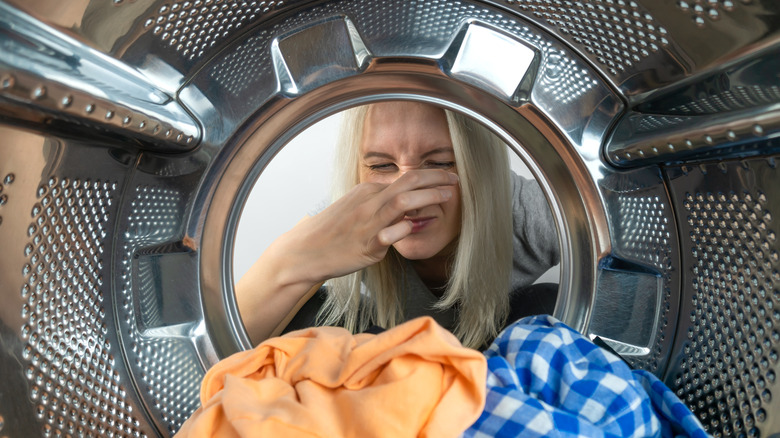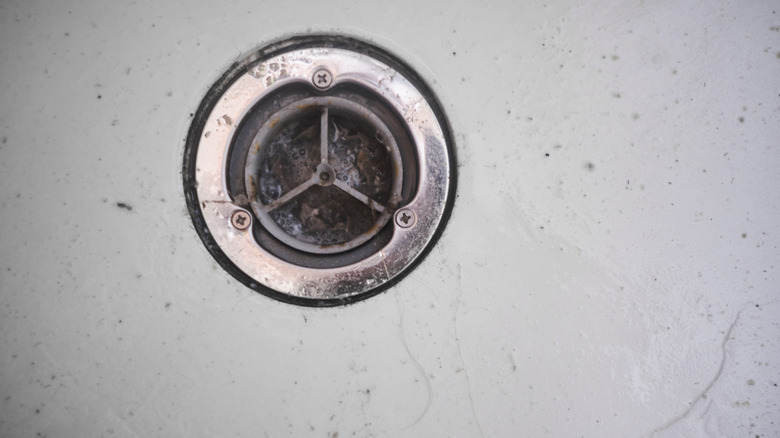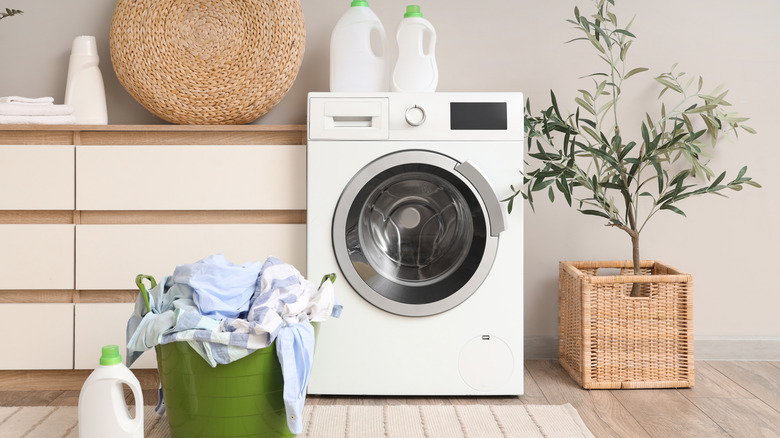Why Your Laundry Room Smells Like A Sewer (& What To Do About It)
If you walk into your laundry room and feel like you've been transported to the city sewer, don't panic. You're not alone. Many people deal with mysterious smells in their laundry rooms, and the culprit is usually closer than you think. That gross, rotten smell isn't from a hidden monster under the floor — it's usually an issue with your plumbing. Specifically, the p-trap and clogged drains are two of the biggest troublemakers.
First up: the p-trap. This little piece of plumbing is shaped like a "U" and is under your sink or floor drain. When it's working correctly, it holds water that creates a seal to keep smells out. However, if it dries out — say, if you haven't used the sink or drain in a while — that seal disappears. Without water in the p-trap, sewer gases freely waft into your laundry room. It's like leaving the front door open for bad smells to waltz in.
If the p-trap isn't the problem, your drains could be. Over time, laundry lint, soap residue, and who-knows-what-else can accumulate in your pipes. This blockage slows down drainage and creates the perfect environment for stagnant water and rotting debris — a truly smelly combination. Clogged drains don't just stink your laundry room; they can also lead to bigger plumbing issues if left unchecked.
What to do to prevent your laundry room from smelling like a sewer
If your laundry room already has that foul smell, it's not too late. One of the easiest ways to prevent it from smelling is to ensure the p-trap always has water. If you've got a sink or floor drain that doesn't get used much, pour a few cups of water into it now and then. This simple step keeps the water seal intact, preventing sewer gases from entering. For added protection, you can pour mineral oil on top of the water to slow evaporation.
If your drain is clogged, don't just cross your fingers and hope for the best. Grab a drain snake (or borrow one from your neighbor who has everything) and get to work. A drain snake is a long, flexible tool that can reach deep into your pipes to remove blockages. Wiggle it around to grab all the lint, hair, and gunk causing the clog. It's not glamorous, but it's effective in fixing a clogged sink. Once the clog is gone, flush the drain with hot water to wash away any remaining debris.
Lastly, fix drain leaks promptly. Sometimes, the issue isn't just what's in your pipes, but what's leaking. A cracked or loose pipe can let sewer gas escape, even if your p-trap and drain are in good shape. Inspect your pipes for any signs of leaks, like water stains or moisture around the connections. If you find a problem, fix it immediately. Tighten loose fittings or replace damaged parts.
Maintenance tips for your laundry room
To ensure your laundry room remains in top shape all year, you must look after it. First, clean your washing machine monthly. Your washing machine works hard to keep your clothes clean, but it needs a little TLC, too. Once a month, run an empty cycle with hot water, vinegar, and baking soda. This combo removes detergent buildup, mold, and bacteria in your washer. Don't forget to wipe down the door seal and detergent drawer, as these spots can harbor hidden grime.
Controlling the humidity levels in your laundry room is also essential. Laundry rooms can get humid fast, and that's a recipe for mold and mildew. To keep humidity in check, open a window or use a ventilation fan while doing laundry. Consider running a dehumidifier in your house if your laundry room doesn't have great airflow. Keeping the air dry helps prevent musty smells and makes the room more pleasant. After all, you don't want to feel like you're doing laundry in a rainforest.
Finally, deep clean the room's surrounding areas. When did you last clean under and around your washer and dryer? If you are scratching your head, it's time to get to work. Dust, lint, and spilled detergent can accumulate in hard-to-reach places, creating a breeding ground for odors. Pull out your machines and give the floor a good scrub. Wipe down walls, shelves, and any surfaces where dust likes to settle. A deep clean keeps smells away and makes your laundry room look brand new. No more holding your nose every time you do laundry — just the smell of fresh, clean clothes.


